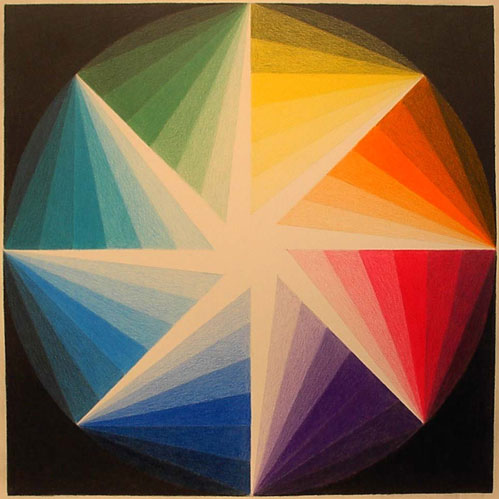|
|
|
|
Final Exams 2011 |
Mallory Rogers
Out with the Old and In with the New
All
literature is rooted in culture.
Postcolonial literature of the new canon, and its
characters, are more contemporary than ever. People in books represent class and
style overall, not merely individuals. As a result of colonization process, the
indigenous culture becomes ruralized, and property of farm folks.
Cities become businesses,
the language of the colonizers is played up and the settled began playing by the
settlers rules. The indigenous culture continues to be pushed aside until it
stops being whole and eventually there becomes a new way of life for the set of
non-central people.
With this notion, in colonial literature, native
cultures begin the process of deconstruction. With this, a new class of hybrid
characters emerges from what were once seemingly traditional classes to create
modern characters that incorporate tradition and different ways of life. It’s
worthwhile to note that the most important component of advancing the
deconstruction of a culture is the reorganizing of it—the process of recovering
tradition, forms and norms and refitting them to fit the present.
This modern approach is the
response to the transformation of society, and it creates a puzzle out of
problems to be solved. Women, for instance, transform their role in their
culture, and as a result, many upset the norm by going against the grain. As Dr.
White commented in his lecture, characters who like this are forced to transform
as a result of colonization must be willing to take the old with the new, and
fit old ideals into new ones, or risk getting left behind.
In
order to change your identity, which the process of hybridity demands,
characters must remain flexible and adaptive. In
Jasmine, we see the transformation of
old to new world ideals through the protagonist Jasmine… also known as Jyoti
when she comes to America and as Jane at the end of the novel. When the story
begins, Jasmine is described as being shaped by her past—Trinidad’s culture
brought her up to be “caring and have no mind of her own,” while her family’s
wealthy background provided her with a comfortable and privileged position
(Mukherjee 46). She was proud of her light skin, her closeness to resources and
even her work ethic. She also accepted her fate: she’d become educated to find a
“position” and enter into an arranged marriage because she was born a girl.
However we see inclinations very early that suggest
Jasmine was open to the new ways of the more modernized world. On page 68 of the
novel, for instance, she says “to want English is to want more than you had been
given at birth.” This modern approach is reinforced by the dominant cultures
influence in settled colonies. Even with this statement though, Jasmine still
remains faithful to her cultural roots, by expressing her want to “get pregnant
[because she] was past fifteen” (77).
Her husband though, who can also be seen as a newly
transformed male hybrid form, denounced their cultural traditions and instead
encouraged her to wait, and even encouraging her when she gets upset to “keep
arguing [ with him]…[even go so far as to] fight if [you] don’t agree” (78).
This is new territory for the young couple. There are bending traditional gender
roles and equalizing their relationship—something very unnatural for colonial
societies such as old India. But for them, it works.
When
Jasmine finds herself unexpectedly widowed, she vows to travel to America.
However, here, Jasmine is met with the politics of
the new world—she’s treated as an illegal immigrant, with no papers, and
therefore, no respect. She thinks “if I had a green card, a job, a
goal—happiness would appear out of the blue” (Mukherjee 149). In other words, if
I can be like “them,” I can be happy. Here, Jasmine expresses her desire to be
more like the dominating culture and less like herself. Jasmine found her goal –
an ideal Westerner - when she meets Dr. Mary Webb who “has no husband and a big
balance listed in her bank records” (Mukherjee 122). This is it—this is the
“aha” moment we wait for when we read. This is where we begin to see the old
Jasmine from India transforming to the new Americanized version--Jane. Jasmine
immediately aligns herself with Dr. Webb--this new superhero of hers, and
suddenly, Jasmine has a mentor to look up. A mentor unlike anything she’d
experiences in Trinidad. Mukherjee could have moved her “Goodbye nigger
shipping!...Hello America” line here, and it would have fit perfectly (138). At
this point, Jasmine decided to become Jane.
Ultimately, we see that Jasmine learns a lot about living in America through not
only Dr. Webb, but also all of the Americans she meets. “They taught me great
deal about surviving as an Indian in New York,” she says (Mukherjee 162).
Eventually, Jasmine remarries, and her new husband Bud, calls her Jane. They
adopt a son, yet she incorporates her traditional culture by cooking food native
to her birthplace. And even though others call her “Jane,” she continues to
refer to herself throughout the remainder of the novel as “the Indian woman”—so
it’s clear that even though she’s acting more American, that she doesn’t see
herself as an American.
To her she’s still the same Jasmine.
But, is she what we as Americans would call
Westernized? Since coming to America, she’s chosen her husband and not had her
marriage arranged like tradition states, and therefore she’s chosen her fate.
Yet she keeps parts of her deeply-rooted culture alive through her cooking.
Jasmine portrays the epitome of the hybrid character. She takes what works for
her from the modernized world, and infuses it with old traditions to make a new
identity, and a new her.
In “A Cry Far From Africa,” Derek Walcott alludes to this
phenomenon perfectly when he says, “how choose between this [Indian] and
[American] tongue I love? Betray them both, or give back what they give?”
Ultimately, Jasmine betrays her tradition by fusing the old culture with the
new, yet she’s only trying to fit into Western ideals. Is this cheating, or is
she merely righting the wrongs of her birth culture? I say both. But the beauty
in hybridity is that that’s the point of fusing the cultures—it gives the best
of both worlds mixed into one.
In
The Man Who Would be King, we see the
colonial reaction to women who go against the traditional grain. The Colonial
men in the story say, “The Bible says the Kings ain’t to waste their strength on
women, ‘specially when they got a kingdom to work over” (Kipling 2.61). However,
Dan was set on finding a wife. When he thought he found one, he tells her,
“What’s to be afraid of, lass come and kiss me…” She viciously bites him. For
her actions, he deems her “slut” (Kipling 2.74). While Jasmine’s first marriage
was accepted by her as the way of life, the arrangement in The Man Who Would be
King is despised by the woman. She doesn’t want to die for the King.
The traditional view of the Indian ways leads to a
happily ever after plight; however the modern approach taken in the colonials
version makes for a ugly turnout.
So what happens when women begin to stray from
tradition and delve into more modern roles?
In
Things Fall Apart, we see the stark
differences between tradition and modern gender roles through the emergence of
Chielo. In this village, women traditionally tend to the kids and the home,
while men farm and protect their families. Women are repeatedly shown as
“gentle,” while the mean are seen as violent—fighting and killing. Men tell
their sons stories of “violence and bloodshed” while moms share “more feminine
stories of the tortoise and wily ways” (Achebe 53). You can tell from the
stories that women are important to the culture--the children need the women,
and the men need the women. However, what happens when a character blurs the
lines? When Achebe introduces Chielo, she looks like any other woman from the
village. However, later we encounter her taking on masculine traits as she
morphs into the “spirit of Agbala” and snatches Enzima from her sick bed and
throws her on her back racing to the Oracle for what appears to be no reason at
all. She runs quicker than the girl’s mom and dad, both. Enzima’s mom and dad
chase her but neither can keep up—she was quicker than both the representative
male and female.
When
Chielo initially appears to take Enzima, we see Okonkwo, worried for his
daughter, pleading with her to let her sleep. She retorts, “Beware Okonkwo...
beware of exchanging words with Agbala—does a man speak when a God speaks?”
(Achebe 101). With this, Chielo does not see herself as a woman, but a as a man.
An elite man at that. What does this say for this
version of the modernized female character?
A woman, who thinks she has the power of a man. To
me, as a reader, this woman is irrational, she’s crazy—she’s unlike any
tradition I’ve ever read about. So if Chielo isn’t traditional, then she has to
be modern. But does this version of modern work for society? In this case she’s
seen as superwoman--far stronger than any other from the village. However, the
only problem with that is, superwoman as we all know, isn’t real.
Postcolonial literature works to expose the wrongs in colonialism. I think the
oppression women face in traditional societies is overbearing.
They do not have the choice to remain traditional,
and as they see an alternate way of life, many don’t want to stay in-line with
tradition. For Jasmine, she would have gone crazy being controlled. But, on the
other hand, too much modernity can be harmful, as we see through the portrayal
of Chielo. To make it work, characters must find a balance between the old and
the new, traditions and modernity. They must adapt to make the changes for their
cultures and work for their lives.
The colonial influence left few aspects of culture untouched.
In general, we’ve seen that the older the characters are (think Chielo) the more
they are set in their ways. They are stronger and more resilient to change,
while young adults such as Jasmine are open to transformations. The younger the
character, or person for that matter, the more adaptable they are, and their
chance of morphing into a new identity is higher. The transformation of the
women we studied throughout the semester was merely a response to the
transformation of society as a result of colonialism. When colonialism was
introduced, a new native culture emerged that included old characters with new
and fused identities of what worked for them in their traditional society and
what need to be changed. Through postcolonial literature, we see that modernity
is a good thing, however, it also shows us that too much of a good thing can be
bad. Jasmine shows the good, while Chielo shows the bad. The happy medium is
Jasmine—she’s traditional in her modern ways, and she’s the poster child for
hybridity as she ultimately was happy because she got the transformation process
just right.


